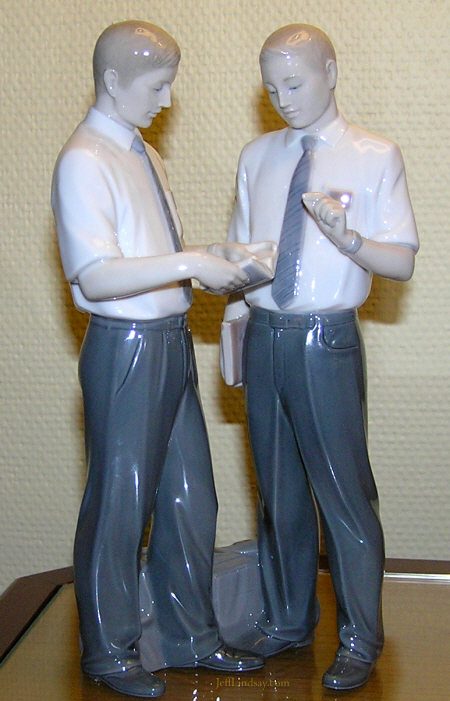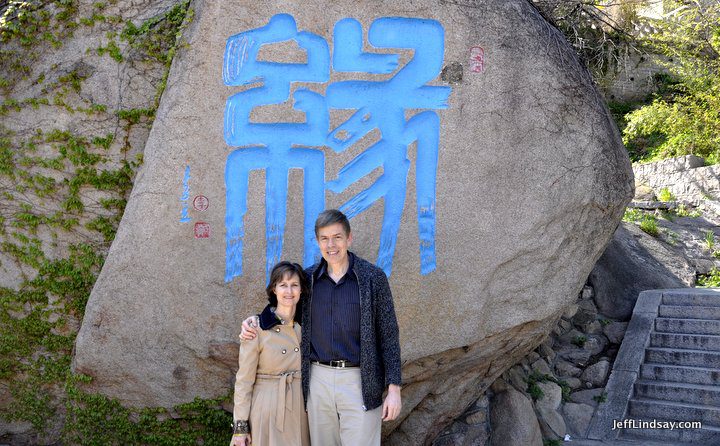I just updated a previous post on the rather entertaining issue of the Comoros Islands and the Book of Mormon. It is possible for words and names from different languages to show similarities entirely by chance – something that both critics and defenders of the Book of Mormon need to keep in mind. A couple of apparent similarities does little to prove fraud or authenticity (though the heavy track record of Semitic parallels in Book of Mormon names may not be easy to explain away, especially when “laughable blunders” become verified, like the female name Alma later being shown to be an authentic Jewish man’s name from the time of Lehi).
Well, as an aside on the post about Comoros, I pointed to the Mayan archaeological site of Lamanai in Belize as an example of an interesting parallel in Mesoamerican names with the Book of Mormon (perhaps just indicative of how the sword of chance can cut both ways). While it may have no real connection with the name Lamoni (or other names related to Laman) in the Book of Mormon, the interesting thing about Lamanai is that it is “one of the very few Maya sites for which the ancient name is recorded” according to a quotation I just received from the Journal of Field Archaeology:
Our choice of the site for intensive investigation was based on the presence there of a 16th-century secular Catholic church, the existence of which was first noted by Castells, who incorrectly identified the structure as Pre-Columbian. Castells’ description of the church was, unhappily, the basis for Thompson’s mention of a structure with round portal columns at the site, possibly reflecting Central Mexican influence in Western Belize. Though the church had been the source of some confusion, its presence demonstrated that Lamanai was inhabited in early historical times, and the possibility clearly existed that the occupation in that period represented the upper end of a continuum from the Classic (3rd to early 10th centuries A.C.) or earlier. There was ample evidence, in the form of obviously complex, large structural remains, to indicate that the site had probably been an important center during the Classic, so that excavation could be expected to provide insights into developments in the Central Maya Lowlands over a considerable period. Though the locale is generally known in Belize as Indian Church, a name apparently coined in the early 19th century, Lamanai is in fact one of the very few Maya sites for which the ancient name is recorded. It appears on a church list of 1582, and the site was visited and very sketchily described by Fathers Bartolome de Fuensalida and Juan de Orbita in 1618. (David Pendergast, “Lamanai, Belize: Summary of Excavation Results, 1974-1980,” Journal of Field Archaeology, Vol. 8 No. 1, [1981) pg. 29-30)
I’ll credit Dennis, the sender of this information, if I get his OK to mention his full name.
While the connection between Lamanai/Lamoni may be interesting, I think an important point is the reminder about just how few ancient Mesoamerican place names have been preserved. A given site may have been occupied by several different cultures since Book of Mormon times. Many interesting sites are known today only by Spanish names or relatively recent native names. But what was the place called in 100 B.C. or 200 A.D.? How was it pronounced? In so many cases, we still don’t know. So for those critics who expect us to point to sites with names like Zarahemla and Nephi if the Book of Mormon is to be taken seriously, I urge a little more patience.
Oh, let me spare the need for about 20 critical posts with a pre-emptive snarky comment: “Ha! You’ll have to be patient all the way into eternity if you’re waiting for evidence of the trashy piece of fiction! Might as well wait for evidence that the moon is made of chese.” To which I say, “If you can’t even spell cheese right, try commenting somewhere else.” And do realize that there are actually a great deal of potential evidences for authenticity of the Book of Mormon that the sincere seeker of truth might wish to consider, though nothing compares to the witness of the Spirit as one reads, ponders, and prays to know if that book is from God or just a work of a corrupt man.











It is possible that the hypothetical poster was translating from the Egyptian. Since Egyptian orthography had no provision for vowel, it is cutomary for Egyptologists to stick in an “e” where needed to help them pronounce their hieroglyphs. Thus CHS becomes CHeSe.
Likewise, no one’s really ever found a personal name “A’LMA'” in Hebrew, have they?
Aren’t there aging dates that put civilization life in Lamanai back before the Nephite/ Lamanite civilization?
Howdy!
“A’LMA”… so you’re saying Yigael Yadin is a hack, eh?
http://www.jefflindsay.com/BMEvidences.shtml#names
-Shawn
Brant Gardner has discussed this issue:
Lamanai
An audiobook by Dan C. Peterson, and read by himself, is being auctioned on Ebay.
Brant Gardner’s remarks (see the link in the comment above) are helpful here:
The city that has a Book of Mormon sounding name is Lamanai. There is a perfectly good etymology in Maya, so I suspect that it is unrelated.
There is a major issue with tryng to correlate any name of an archaeological site with the Book of Mormon – the current names come from modern times and are typically unrelated to the ancient names. Even names that are known from textual histories are better known by different names. For instance, Utatlan (capital of the Quiche) is the more common name. However, K’umarkaaj is the Quiche name (and is less known).
Until about 15 years ago, none of the original names of Maya sites was known. Now it is accepted that Tikal was anciently Mutal. In some cases, major cities were known as “place of reeds” (such as Tollan). It now appears that this is a designation for a major capital and was translated into multiple languages and applied to different cities – many of whom were a “place of reeds.” Hence that might have been a term more akin to “captial” than a place name.
It is a very complicated issue in Mesoamerica. Those who expect that names would have persisted, like Jerusalem, are making erroneous assumptions about the available data for the New World.
I’m sorry I did not realize you needed my permission. I’m pleased you found the information I sent you suitable for use.
I authorize you to use my name. Please do not use a period or other punctuation following my single vowel middle name. It is a peculiarity of which I’m rather fond.
Dennis O Dorrity, Sr.
While you are searching for faith-promoting geographical map names, maybe one should pay more attention to such locations that were in existence in the life and environment of a young Joseph Smith, namely: Lehigh Valley, PA; Alma, NY; Angola NY, Zarahemla, NY; Oneida (Onida), NY; (Narrow Neck of Land); Rama ONT; etc etc.
Well, you get the idea — so did Joseph Smith.
I love anonymous comments…
According to the US/NY census bureau (whose link won’t be accepted but you can google that time period and it will pop up) there are no such cities or towns or even dwellings listed named Zarahemla or Alma. Perhaps rather than being a figment of Joseph’s imagination, they are merely a design of your own creation. Rather than accusing Mormons of blindly following on faith, I suggest you do your own research before making erroneous accusations. I applaud Jeff for at least asking questions and having active faith and researching to gain further understanding.
Can one suppose that since the name Lamanai was known in the 16th & 17th century among European settlers of America, that perhaps the name was in literature about C./S. American aborigines? If so, the name could have been kopted from documents of the day in early 19th century, as one devised self-written stories of ancient America. What would be surprising is if a very prominent name used over and over as part of a great civilization claimed to exist in America (say, Nephi(ites)) were to suddenly appear in a dig, never to have presented itself before our times. That would a miraculous find indeed. But I doubt such after-the-fact coincidences will occur, so using pre-existing coincidences to back prove a connection to the bom will suffice for the faithful.